It's easy to bypass Phetchaburi, the dusty, slow-moving, eponymous provincial capital located some 120km southwest of Bangkok, while on the way to more popular destinations like Hua Hin, Cha-am and Kaeng Krachan National Park. Those who do, miss out on a city with its own special charms and attractions from 12th century Khmer ruins to century-old traditional Thai wooden houses and delicious local cuisine.
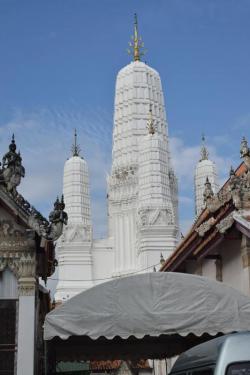
Wat Mahathat. Stephen Steele
Recently, I made an overnight stop there and saw that the city's uncongested, flat and well-paved roads lend themselves to one of my favourite endeavours, cycling. I decided to make a return trip to ride around and take in the sites. The 2N Guest House, where I stayed, offers free bicycle rentals to guests. But being a bicycle snob, I chose to load my Cannondale Quick 4 onto a cargo car at Hua Lamphong Railway Station, and was off for a few days of temple-hopping, light trekking and exercise.
The city is perhaps best known for its two enduring landmarks, Phra Nakhon Khiri, the summer palace of King Rama IV, and Wat Mahathat Worawihan, with its soaring five prangs. Both sites serve as a beacon for the wayward traveller trapped within the city's labyrinth of roads. But there are other lesser-known sites that are easy to miss and well worth visiting.
Phetchaburi's roads aren't perfectly gridded. Roads that run parallel in one location cross over at another. While it may not be as confusing as it sounds, keep in mind when receiving directions that when someone says "Go straight", they're probably saying, "Make a sharp right turn", which I learned on the way to my first destination Wat Ko Kaeo Suttharam, a late Ayutthaya period temple with stunning, full-length murals, some of which depict Buddha's life, adorning all four walls.
The murals were created in 1734, although the temple may be older, and the grounds are actually nondescript. But you'll want to gain entry to the ordination hall, or ubosot, which is normally padlocked. Seek out a monk who will gladly open the hall's doors. The murals are magnificent. As you look from the ceiling down, you'll notice the murals gradually fade away, with details lost to time and the elements.
"Unfortunately, we are in a preservation mode not restoration mode," said Surasit Sangsuriya, an architecture lecturer at King Mongkut's University of Technology, North Bangkok, who visited the temple in late March with a group of 80 of the next generation of Thai architects.
From there I cycled to Pho Karong Road to see Wat Kamphaeng Laeng, an active local temple that contains the ruins of a 12th century Khmer temple complex. Phetchaburi's oldest structures, the temples are not as grand as the ancient complexes in Phimai and at Phanom Rung. But they provide good photo opportunities and are worth a trip for those interested in the region's abundance of Khmer ruins.
A few hundred metres down Pho Karong, the headless statues and crumbling walls of Wat Phai Lom await you. The temple, which dates to the early Ayutthaya period (1351-1767) is somewhat neglected, with reinforced steel beams propped under archways to hold them in place. The temple is located next to the city prison.
From there, I cycled back in the same direction I came to Wat Yai Suwannaram, a late Ayutthaya period temple and one of the town's principal attractions. It's perhaps best known for the teak pavilion that was constructed in Ayutthaya in the 17th century and later moved to Phetchaburi by boat. The ordination hall also contains 300-year-old fading murals of Buddha's life, similar to Wat Ko, and a statue of a six-toed Buddha.
For lunch, I stopped at the venerable Cheg Ar, a small shophouse restaurant near Wat Mahathat and one of Phetchaburi's oldest, for a perfect dish of noodle soup with pork belly and offal. It's so good that this restaurant alone may be reason enough to visit Phetchaburi, if tripe stew is your thing. Ask a local resident how to get to Cheg Ar, they don't give directions, but personally deliver you to its front entrance. It's that popular.
After lunch, I crossed the street for a stroll down the local roads to see century-old traditional Thai teak houses, many still owned and in use by newer generations of the original families. Located alongside the Phetchaburi River, it's a great area for photos or to relax at any of the number of coffee shops.
The city also has a couple of mild trekking routes, the most popular being the 95m trek up Phra Nakhon Khiri. You can ride the tram with obstructed views, but I'd rather walk up the densely landscaped hill where nature shuts out the sounds of the city below. Beware of the opportunistic monkeys though. Make sure your camera strap is around your neck.
Nearby Phra Nakhon Khiri is Wat Khao Bandai It, an Ayutthaya period temple on top of a 121m hill, where trekkers are rewarded with stunning views of the city and nearby farmland.
A lesser-known temple worth mentioning is Wat Vihan Bot, located outside the city centre close to Khao Luang Cave. The temple offers a fantastic trekking route with beautiful views of the countryside. To find it, as you head toward Khao Luang, turn at the walled temple adjacent to the rice fields. From there, follow the trail of cooked rice, fresh fruit and occasional pile of processed pet food as Wat Vihan Bot also is home to dozens of well socialised stray dogs, whose care is a shared communal responsibility.
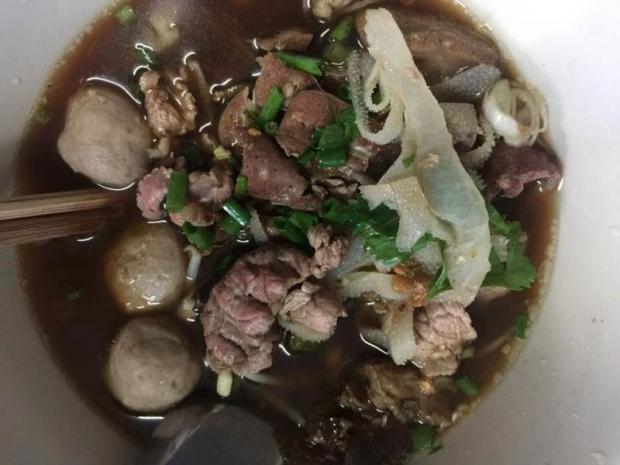
Noodle soup with tripe and pork entrails from Cheg Ar restaurant. Stephen Steele
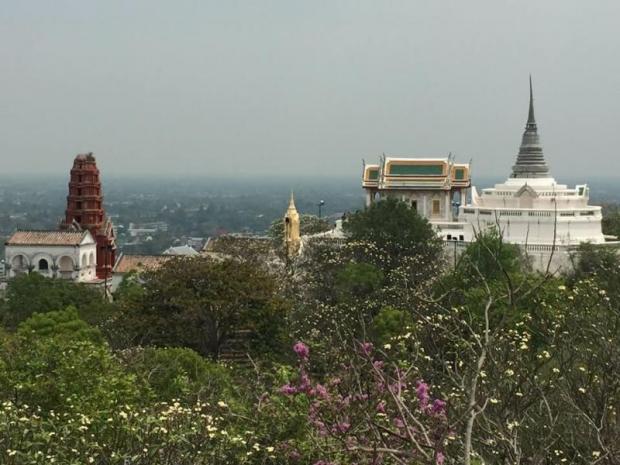
View of Phra Nakhon Khiri Historical Park. Known locally as Khao Wang, the former summer palace of King Rama IV is the city's most enduring landmark. But beware of opportunistic monkeys as you ascend the 95m hill. Stephen Steele

The 12th century ruins of a Khmer temple located on the grounds of Wat Kamphaeng Laeng is Phetchaburi's oldest structure. Stephen Steele

The beautiful landscaped grounds of Phra Nakhon Khiri. Stephen Steele
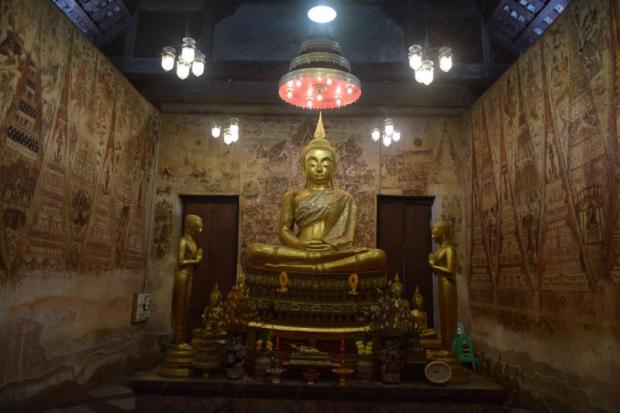
Inside Wat Ko Kaeo Suttharam, an early Ayutthaya period temple. Stephen Steele

Wat Ko. Stephen Steele
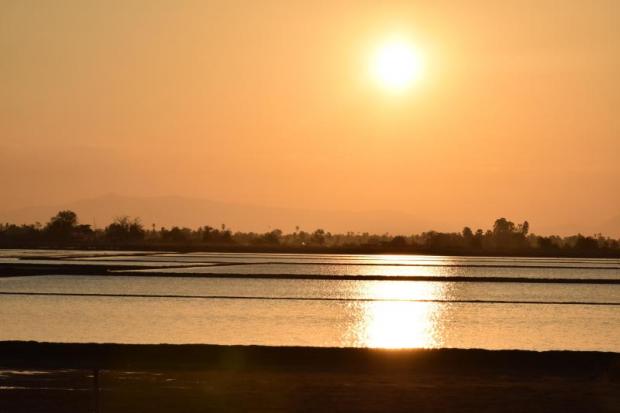
Sunset over the salt farms in Ban Laem district. Stephen Steele

View of the countryside atop the underrated Wat Vihanbot. Stephen Steele

A farmer tends her herd. Stephen Steele
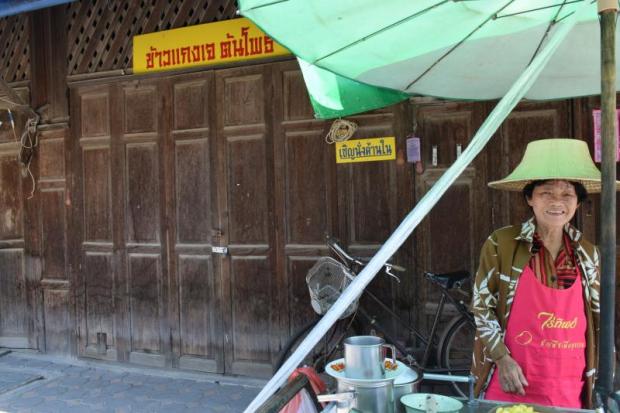
A noodle vendor attends to her cart outside a century-old traditional Thai teak shophouse. Stephen Steele
A perfect second-day trip is the 10km ride to the salt flats in Ban Laem where you'll pass traditional Thai teak houses on stilts and the lush verdant rice fields. It's a spectacular scene. In Ban Laem, you can cherry-pick from any one of the seaside barbecue restaurants and enjoy one of the most elegant sunsets I've seen in Thailand.
I mapped out a one-day itinerary for Phetchaburi that I quickly extended to a second and then third day. If you're rushing anywhere in this city, you're missing its point. It's a gentle city dissected by a lazy river. It's Thailand's Big Easy, close to Bangkok but worlds apart.


